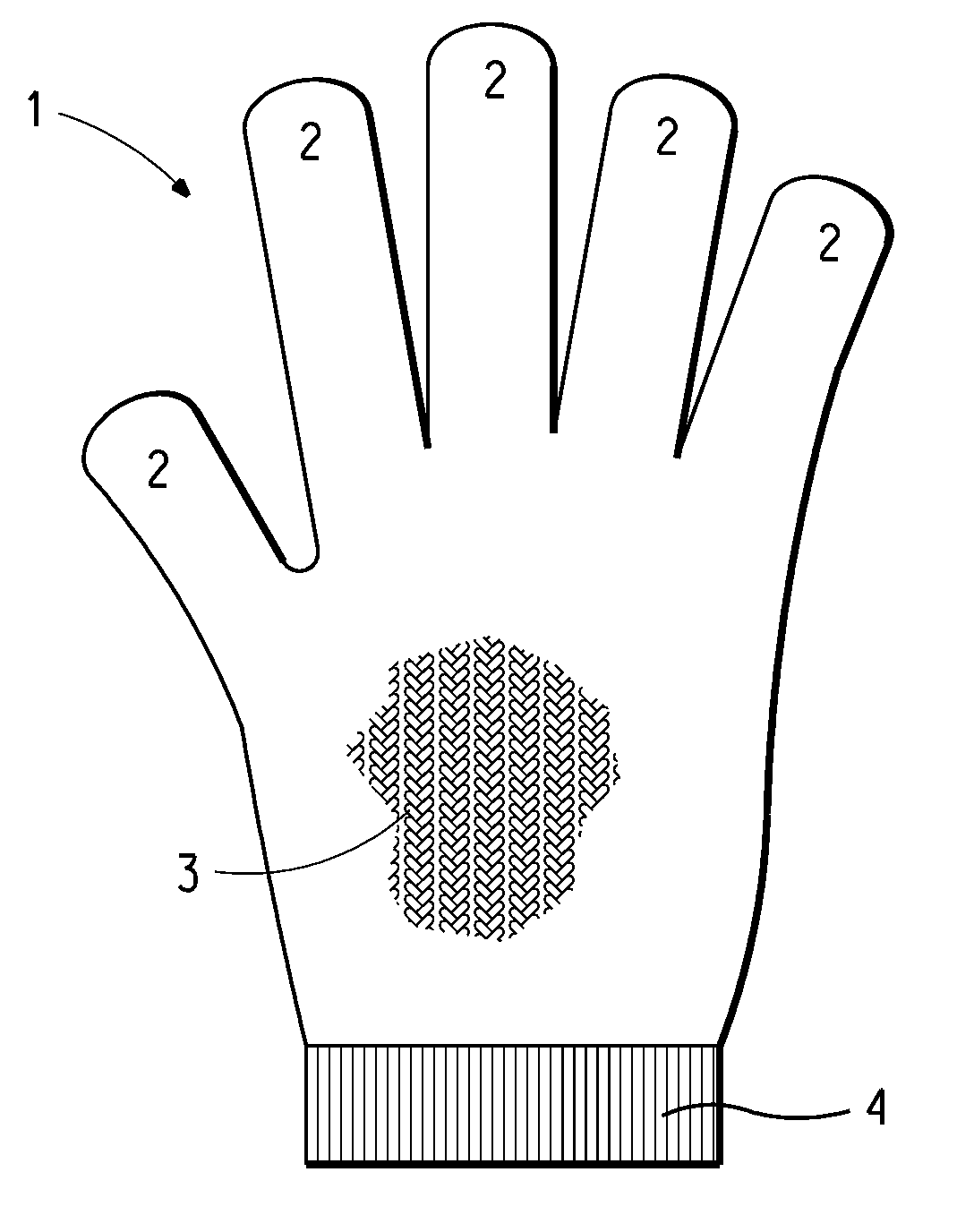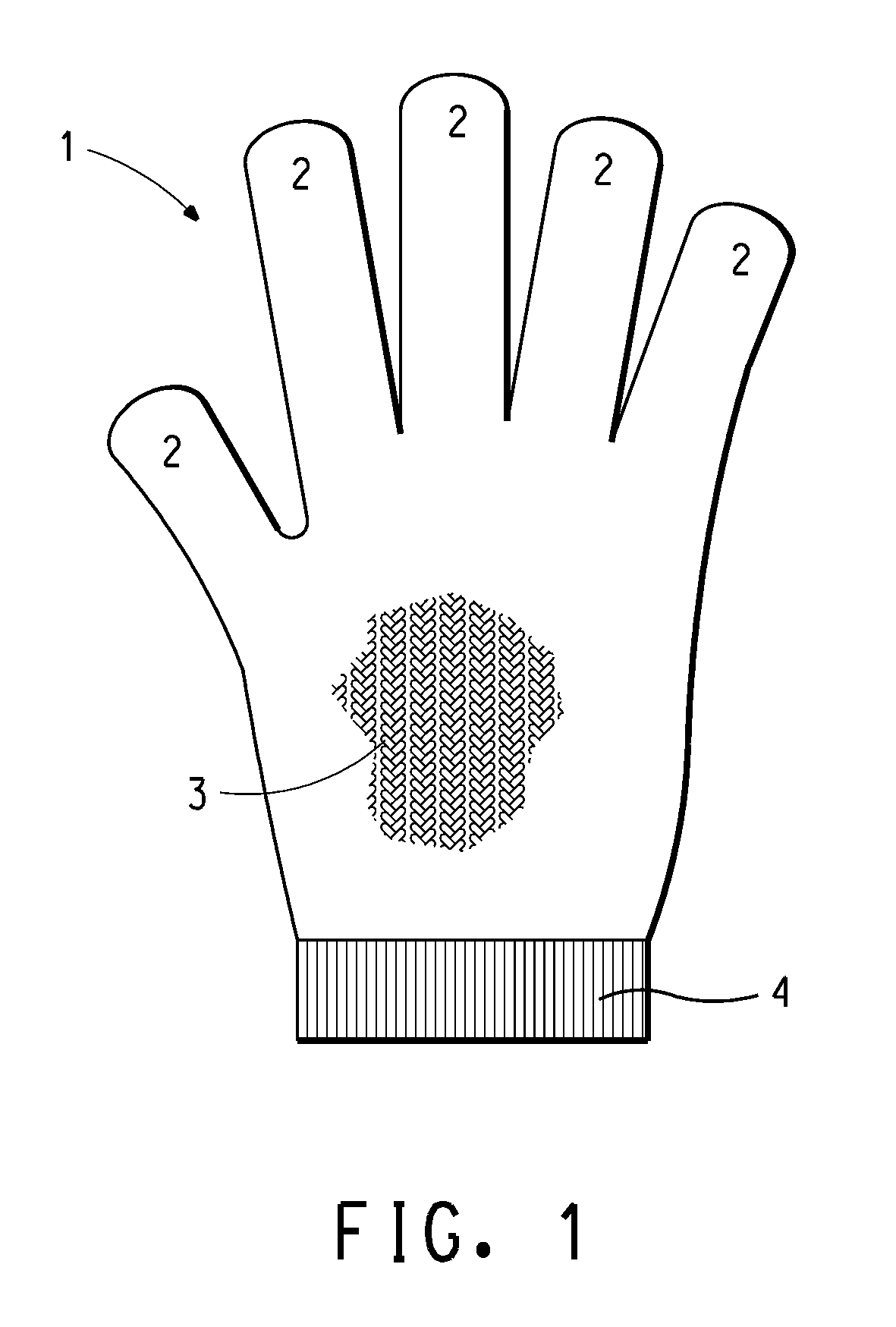Cut-resistant gloves containing fiberglass and para-aramid
a technology of fiberglass and para-aramid, which is applied in the field of improved construction of cut-resistant knitted gloves, can solve the problems of bare glass fiber, high hardness, easy absorption, and high irritation of the skin
- Summary
- Abstract
- Description
- Claims
- Application Information
AI Technical Summary
Problems solved by technology
Method used
Image
Examples
example 1
[0037]A cut-resistant glove was made in the following manner. A bobbin of cut-resistant composite yarn was made having a longitudinal core of 110 dtex (100 denier) E fiberglass combined with a 295 dtex (266 denier or 20 / 1 cotton count) poly(paraphenylene terephthalamide) staple spun yarn. The core was wrapped with one wrapping of a 167 dtex (150 denier) textured continuous filament polyester yarn at a frequency of 7 turns per inch (3 turns per cm) of core. A bobbin of lining yarn was made having a longitudinal core of 40 denier spandex plied with a 295 dtex (266 denier or 20 / 1 cotton count) polyester staple fiber yarn. The core was wrapped with one wrapping of a 44 dtex (40 denier) textured continuous filament nylon yarn at a frequency of 7 turns per inch (3 turns per cm) of core. Yarns from these two bobbins of yarns, along with a yarn from a bobbin of companion yarn of 167 dtex (150 denier) textured continuous filament polyester yarn, were fed, without any prior assembly (i.e. ply...
example 2
[0038]Another cut-resistant glove was made in the same manner as in Example 1 except the cut-resistant composite yarn was wrapped with two 44 dtex (40 denier) textured continuous filament nylon yarns instead of a single 167 dtex (150 denier) textured continuous filament polyester yarn. One of the 40 denier nylon yarns was wrapped in the “S” direction while the other was wrapped in the “Z” direction using one step. Glove properties are shown in the Table.
[0039]
TABLEAbrasionBasis WeightCut Resistance IndexResistanceExamplegrams / m2 (oz / yd2)(grams / oz / yd2)(cycles)1424 (12.52)1123052393 (11.58)124338
PUM
| Property | Measurement | Unit |
|---|---|---|
| linear density | aaaaa | aaaaa |
| linear density | aaaaa | aaaaa |
| linear density | aaaaa | aaaaa |
Abstract
Description
Claims
Application Information
 Login to View More
Login to View More - R&D
- Intellectual Property
- Life Sciences
- Materials
- Tech Scout
- Unparalleled Data Quality
- Higher Quality Content
- 60% Fewer Hallucinations
Browse by: Latest US Patents, China's latest patents, Technical Efficacy Thesaurus, Application Domain, Technology Topic, Popular Technical Reports.
© 2025 PatSnap. All rights reserved.Legal|Privacy policy|Modern Slavery Act Transparency Statement|Sitemap|About US| Contact US: help@patsnap.com


